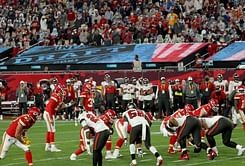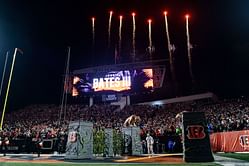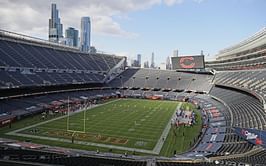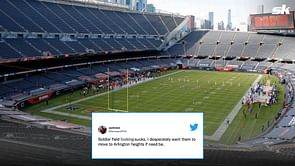- What is the most expensive NFL Stadium?
- List of Top 10 Most Expensive NFL Stadiums in the world
- SoFi Stadium, Inglewood California
- MetLife Stadium, East Rutherford, New Jersey
- Allegiant Stadium, Paradise, Nevada
- AT&T Stadium, Arlington, Texas
- Mercedes-Benz Stadium, Atlanta, Georgia
- Levi’s Stadium, Santa Clara, California
- U.S. Bank Stadium, Minneapolis, Minnesota
- Lucas Oil Stadium, Indianapolis, Indiana
- Ford Field, Detroit, Michigan
- Lincoln Financial Field, Philadelphia, Pennsylvania
Stadiums are the soul of any NFL team as a huge wave of fans cheer for them during the all important matches. It is the place where teams truly connect with their fans and the center bed for all NFL action.
Home fields matter a lot for any team and some stadiums stand out among others. The most expensive stadiums in the NFL are the newest stadiums. Stadiums help maximize revenue for teams through ticket sales and advertising. Stadiums also hold a lot of value for fans sentimentally as teams give it their all out there. Not looking at stadiums by their sentimental or historical value, let us take a look at the most expensive stadiums in the NFL currently.
What is the most expensive NFL Stadium?
The most expensive NFL Stadium is the SoFi Stadium in Inglewood, California. Opened on 8th September 2020 it is also the newest NFL stadium in the NFL. The SoFi Stadium is home for Los Angeles-based franchises L.A. Rams of the NFC and the L.A. Chargers of the AFC.
The SoFi Stadium is a multipurpose entertainment arena and apart from hosting NFL matches it also hosted many concerts and is also set to host the 2023 College Football Championship and opening and closing ceremonies of the 2028 Olympics.
The stadium can seat 70,240 people and even expand seating upto 100,240 for major events. The construction cost is believed to be around $5 billion, making it the most expensive sporting arena in the world.
List of Top 10 Most Expensive NFL Stadiums in the world
Here are the most expensive NFL stadiums in the world currently:
| Rank | Name | Location | Cost (adjusted for inflation) |
| 1 | SoFi Stadium | Inglewood, California | $5.76. billion |
| 2 | MetLife Stadium | East Rutherford, New Jersey | $2.11 billion |
| 3 | Allegiant Stadium | Paradise, Nevada | $1.99 billion |
| 4 | AT&T Stadium | Arlington, Texas | $1.87 billion |
| 5 | Mercedes-Benz Stadium | Atlanta, Georgia | $1.66 billion |
| 6 | Levi’s Stadium | Santa Clara, California | $1.4 billion |
| 7 | U.S. Bank Stadium | Minneapolis, Minnesota | $1.24 billion |
| 8 | Lucas Oil Stadium | Indianapolis, Indiana | $960 million |
| 9 | Ford Field | Detroit, Michigan | $950 million |
| 10 | Lincoln Financial Field | Philadelphia, Pennsylvania | $940 million |
SoFi Stadium, Inglewood California
Opened: September 8, 2020
Capacity: 70,240 but expandable up to 100,240
Construction Cost: $5 billion
Home Team(s): Los Angeles Rams & Chargers
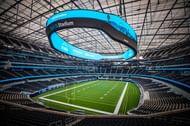
The SoFi Stadium is not only the most expensive NFL stadium but the most expensive sports arena in the entire world. The massive stadium is not only an NFL field but also a venue for concerts and other sporting events like the Olympics (in 2028). The stadium was opened in 2020 and is owned by the Kroenke Sports and Entertainment group. The total construction cost came up to around $5.5 billion. The total area of the stadium comes upto 300 acres with the inclusion of the fabulous Hollywood Park around it. The SoFi stadium recently hosted the 2022 Super Bowl which was won by the Los Angeles Rams (one of the home teams). The stadium also houses the largest scoreboard in professional sports (a 4K video board featuring 70,000 square feet of digital LED lighting).
MetLife Stadium, East Rutherford, New Jersey
Opened: April 10, 2010
Capacity: 82,500
Construction Cost: $2.11 billion (adjusted for inflation, originally $1.7 billion)
Home Team(s): New York Giants & Jets

The MetLife Stadium was constructed in 2010 to replace the Giants Stadium and it is the only other stadium (apart from SoFi) that is home stadium to two teams, the N.Y. Giants and the N.Y. Jets. The two teams also hold equal ownership of the stadium, each owning 50% of it. The stadium was the first open air stadium in a cold weather city to host a Super Bowl (Super Bowl XLVIII in 2014). The stadium has also hosted some of the world’s biggest concerts for artists like U2, Taylor Swift and Bon Jovi among others.
Allegiant Stadium, Paradise, Nevada
Opened: July 31, 2020
Capacity: 65,000 but expandable up to 71,835
Construction Cost: $1.99 billion (adjusted for inflation, originally $1.9 billion)
Home Team(s): Las Vegas Raiders (NFL) & UNLV (NCAA)

Owned by the Las Vegas Stadium authority, the Allegiant stadium was inaugurated in the same year as that of the SoFi Stadium. The stadium is a domed stadium with 10 levels and is spread across 62 acres. The Raiders play on a retractable natural grass surface. The natural grass is retracted as the University of Las Vegas team prefers to play on artificial turf.
AT&T Stadium, Arlington, Texas
Opened: May 27, 2009
Capacity: 80,000 but expandable up to 138,084
Construction Cost: $1.87 billion (adjusted for inflation, originally $1.48 billion)
Home Team(s): Dallas Cowboys
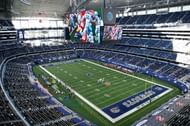
The glorious AT&T Stadium is the stadium with the largest seating capacity in the NFL. The stadium has been majorly financed by the city of Arlington, Texas and they are the primary owners of this 229.5 acres stadium.
The At&T Stadium is not only home to the Cowboys, but it also hosts WWE events like Wrestlemania. The video screen in the stadium used to be the largest in the NFL when the stadium was inaugurated. It is currently the 31st largest high definition video screen in the world.
Mercedes-Benz Stadium, Atlanta, Georgia
Opened: August 26, 2017
Capacity: 71,000 but expandable up to 75,000
Construction Cost: $1.66 billion (adjusted for inflation, originally $1.5 billion)
Home Team(s): Atlanta Falcons (NFL) and Atlanta United (MLS)
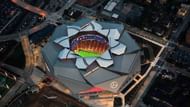
The multipurpose stadium replaced the legendary NFL stadium, Georgia Dome, in 2017. The stadium hosted the 2019 Super Bowl. The stadium is majorly owned by the Georgia World Congress Center Authority. The most exciting thing about the stadium is its one of a kind retractable roof. The stadium houses some of the best food and drinks available during an NFL match with more than 47 types of beer available. The Mercedes-Benz Stadium is also home to the MLS side Atlanta United and has housed the 10-most attended MLS games of all time.
Levi’s Stadium, Santa Clara, California
Opened: July 17, 2014
Capacity: 68,500
Construction Cost: $1.4 billion (adjusted for inflation, originally $1.3 billion)
Home Team: San Francisco 49ers
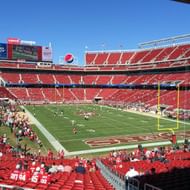
The Levi’s Stadium became the home field for the San Francisco 49ers replacing their old ground, Candlestick Point. It is owned by the City of Santa Clara after they put in the majority of funds in constructing it. It is an open stadium with natural grass on the field. 49ers loyals can download a dedicated app for the stadium to make their game experience smoother. One of the best things about the Levi’s Stadium is that it is registered with the U.S. Green Council and has a 6,500 square feet green roof that has an organically maintained farm on top.
U.S. Bank Stadium, Minneapolis, Minnesota
Opened: July 22, 2016
Capacity: 66,860 expandable to 73,000
Construction Cost: $1.24 billion (adjusted for inflation, originally $1.1 billion)
Home Team: Minnesota Vikings
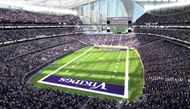
Unlikely to be seen in Minnesota, the U.S. Bank Stadium is a huge stadium with a unique exterior. The stadium has a completely translucent roof and wall panel, that gives the fans of the Vikings a great view of the Minneapolis skyline. It is an indoor stadium that is built on the site of the former Hubert H. Humphrey Metrodome. The stadium is publicly owned by the Minnesota Sports Facility Authority. It has hosted Super Bowls, X Games and is a potential venue for the 2026 FIFA World Cup.
Lucas Oil Stadium, Indianapolis, Indiana
Opened: August 16, 2008
Capacity: 67,000 expandable upto 70,000
Construction Cost: $960 million (adjusted for inflation)
Home Team: Indianapolis Colts
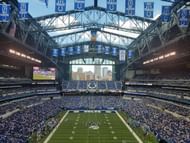
The Lucas Oil Stadium replaced the RCA Dome Stadium as the home field for the Indianapolis Colts in 2008. The stadium is publicly owned by the Indiana Stadium and Convention Building Authority under the State of Indiana. The stadium approximately covers an area of 1.8 million square feet. The naming rights of the stadium have been acquired by Lucas Oil for around $122 million. The retractable roof of the stadium makes it an attraction too. The north window of the stadium can also be retracted to offer a scintillating view of downtown Indianapolis. The stadium has previously hosted Super Bowl SLVI (2012), College Football Playoff National Championship (2022), and concerts for bands like the Guns N’ Roses, and One Direction.
Ford Field, Detroit, Michigan
Opened: August 24, 2002 (renovated in 2017)
Capacity: 65,000 expandable upto 70,000
Construction Cost: $950 million (adjusted for inflation, originally $500 million)
Home Team: Detroit Lions
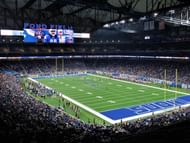
Located in Downtown Detroit, Ford Field has been the home stadium for the Lions since 2002. The stadium is majorly owned by the Detroit Lions. The Lions franchise has been partly controlled and owned by the Ford Motor Company. Large skylights and glass windows allow natural light to enter and illuminate the field. A renovation in 2017 led to the installment of new video boards, restaurants, clubs, bars and suites in the property. The stadium recorded a record attendance of more than 80,000 people during Wrestlemania 23 (2007). The stadium also hosts college hockey, college basketball and has even hosted matches of the 2011 CONCACAF Gold Cup (soccer).
Lincoln Financial Field, Philadelphia, Pennsylvania
Opened: August 3, 2003 (renovated in 2014)
Capacity: 69,879
Construction Cost: $940 million (adjusted for inflation, originally $512 million)
Home Team(s): Philadelphia Eagles (NFL) and Temple Owls Football Team (NCAA)
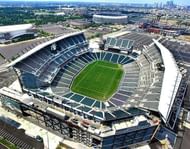
The Lincoln Financial Field is part of the South Philadelphia Sports Complex and replaced the Veterans Stadium as the home field for the Philadelphia Eagles. The Temple University football team also uses the stadium as their home ground. The stadium is State owned and the size of the field is 15 acres. Being an NFL field primarily, the first match played on the field was actually a soccer match between Manchester United and F.C. Barcelona. There are 172 luxury suites located at the Stadium. The stadium has also hosted major concerts for artists like The Weeknd, Bruce Springsteen, The Rolling Stones, Coldplay and Jay-Z among others. The stadium is also one of the most energy-efficient stadiums in the NFL.

